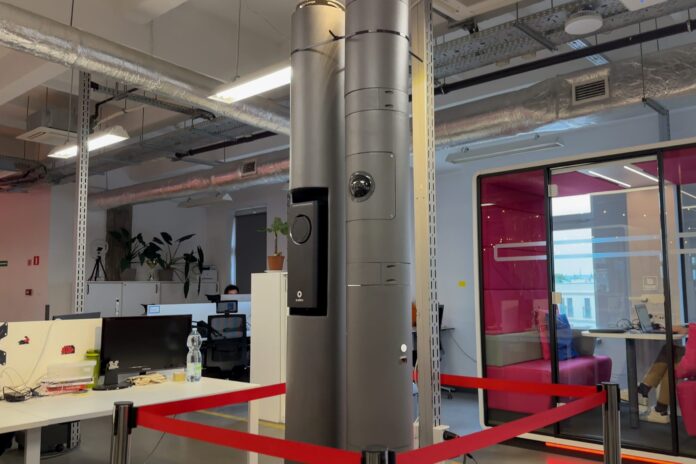The network slicing demo took place at the new Deutsche Telekom lab in Poland and in partnership with with cthings.co and Valmont
Deutsche Telekom demonstrated the use of 5G network slicing for mission-critical urban infrastructure with edge IoT solutions company cthings.co. The demonstration took place at the launch of the hubraum 5G Testing Lab in Kraków, Poland earlier this month and featured a smart lamp pole developed by cthings.co and U.S.-based infrastructure and agricultural company Valmont for use in smart city applications.
5G network slicing is a feature of a cloud-native 5G network architecture that leverages the principles behind network functions virtualization (NFV) and software-defined networking (SDN), allowing for flexible, programmable converged networks wherein disparate services that would typically require parallel systems reside on a single infrastructure. In such an architecture, each network “slice” is an isolated, bespoke end-to-end network tailored to fulfill the requirements of a particular application.
The companies said that, using Deutsche Telekom’s Standalone 5G Network at the lab, they were able to show the “dynamic capabilities of network slicing to ensure the high-quality and latency of surveillance video streaming in real-time.” The combination of 5G network slicing and open APIs enabled on-demand, mission-critical surveillance video streaming in a congested, urban environment, and allowed for precise adjustments in network parameters. This, claimed the trio, ensures an optimal performance that can tailored to specific requirements for different use cases.
“The importance of 5G Network Slicing and open APIs in our portfolio of solutions cannot be overstated,” commented Arnold Wierzejski, CEO of cthings.co. “These technologies enable us to dynamically allocate network resources, ensuring critical applications receive the necessary quality and performance they demand.”
Last month, Deutsche Telekom participated in another 5G network slicing demonstration with partners Blue Planet, Ericsson and Mavenir designed to show the benefits of multi-domain orchestration with open APIs to automatically create new slice-based service offerings on-demand. The demo included the integration of Deutsche Telekom’s customer portal as a part of Business Support System (BSS), Blue Planet’s commercially available Multi Domain Service Orchestrator (MDSO), a cloud-native 5G Core (5GC) from Mavenir and the Radio Access Network (RAN), as well as network management capabilities, from Ericsson.
“Dynamic slicing and automation are key innovations that will play a crucial role to enable the delivery of on-demand 5G offerings with guaranteed quality of service for our enterprise customers,” Changsoon Choi, Deutsche Telekom’s VP of network service differentiation and convergence, said at the time.

